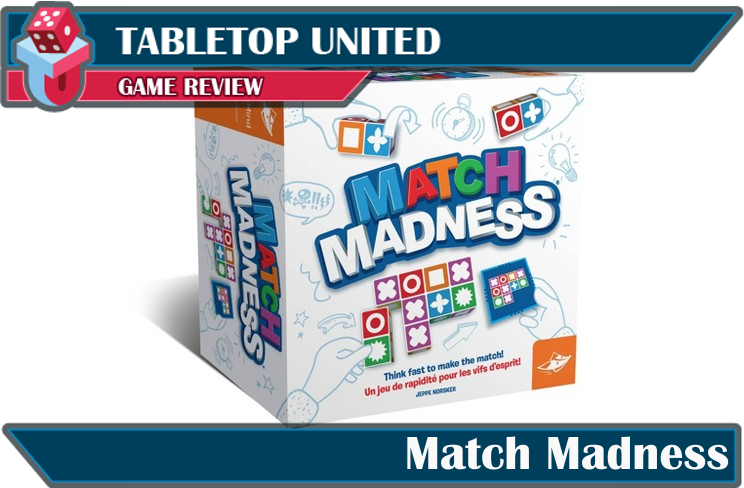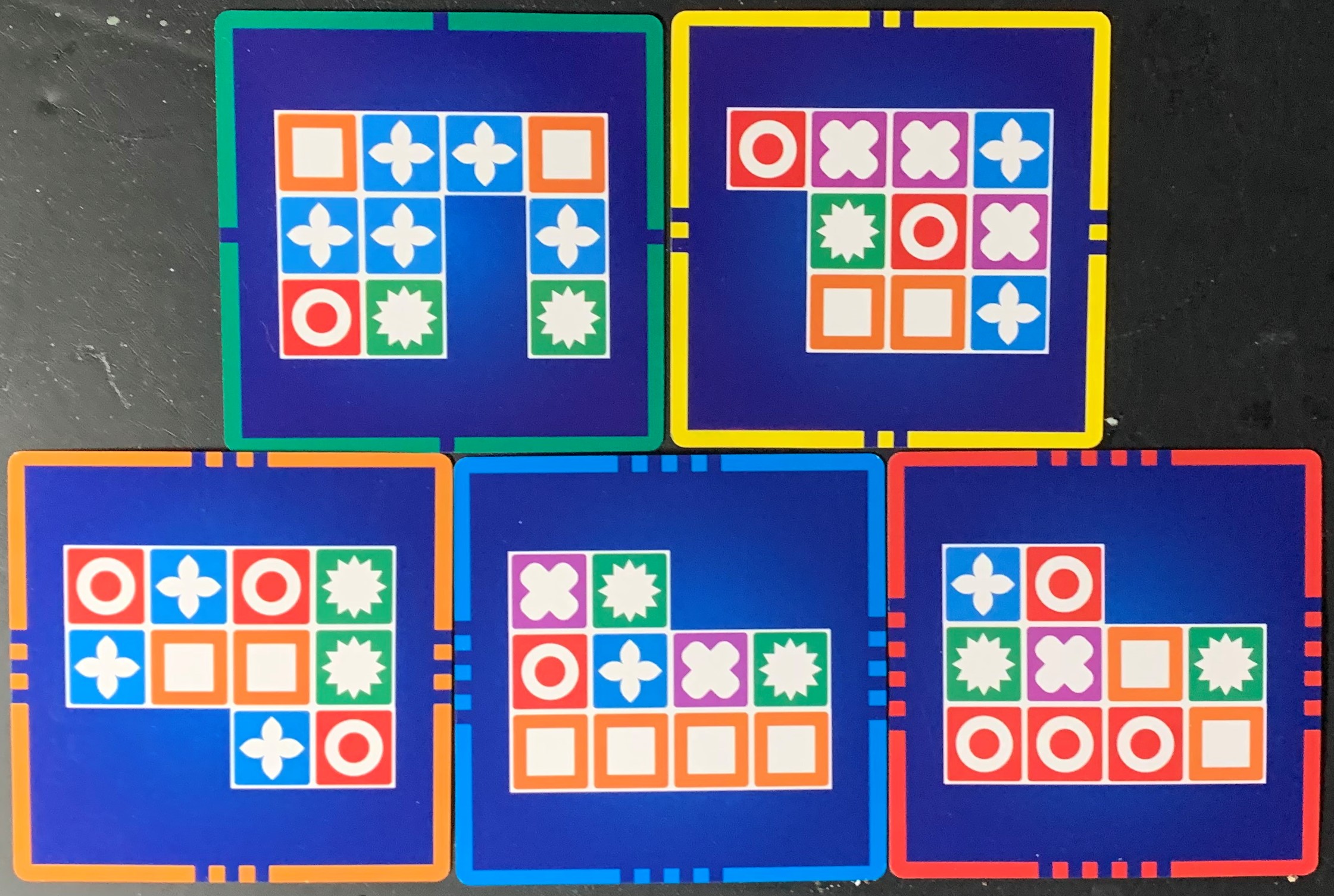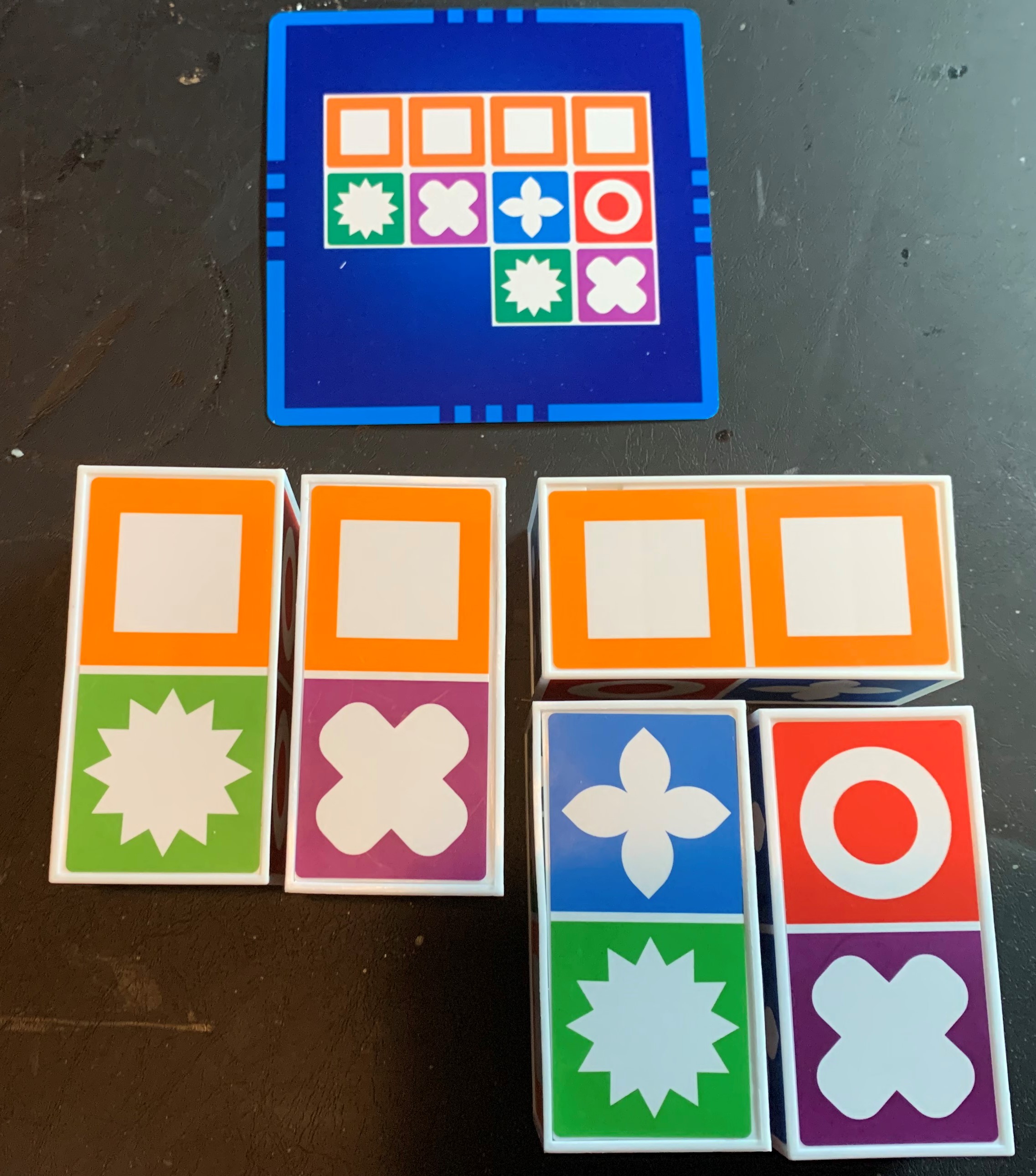
Match Madness
Designer: Jeppe Norsker
Artist: Karl Malepart
Publisher: Foxmind
Year Published: 2016 / 2022
No. of Players: 1–4
Ages: 7+
Playing Time: 20 Minuites
Main mechanic / Theme: Pattern recreation / Learning deduction
Recreate the pattern to claim the card.
Find more info on BoardGameGeek.com
Overview:
Match Madness, designed by Jeppe Norsker and published by Foxmind, is great for younger players developing skills by recreating patterns. Players compete to duplicate the pattern displayed on a card, and the first one to do so collects the point.
I received a copy of Match Madness from Foxmind while attending GenCon 2022 for review purposes.

Gameplay and Mechanisms
Foxmind specializes in games and toys for the entire family promoting the learning of skills. Match Madness fits into their lineup by practicing cognitive matching skills. Each player has a set of five blocks which are the same for everyone. Players need to determine how their blocks fit together to create the pattern.
After giving each player a set of cubes decide how many rounds you want to play. Take that number of cards from the deck and place them upside down where everyone can see them when they are turned over.
Flip the top card. Everyone works with their blocks to create the pattern and the first person completing it correctly, wins the card. When all the cards in the pile have been completed and claimed, score the game.
The base game is just who has the most cards. If there is a tie, count who has the most of the hardest levels (more on that in a moment). You can also play the “Total Madness” rules to provide more strategy.
Total Madness starts with the cards separated into decks associated with their difficulty. The cards are marked with their difficulty by the color of the border and the number of hash marks on each edge.
In this variation, the five separate decks are placed face up in the center of the table. When time starts players work to match any of the cards showing, the harder difficulties are worth more points. When a match is made, the game pauses to verify the player won that card by correctly duplicating the pattern, then the game resumes. Continue until all the cards placed in the central piles have been claimed and then score your pile.
Match Madness can also be played as a solitaire game. In this version give yourself a timer and see how many patterns you can duplicate.
When we played, it was pointed out you could make your own variations of how to play. It was also discovered some of the blocks have the same matching symbols and if you don’t have the right one in the proper place, you can’t complete the pattern.
We had several groups play Match Madness, in different rounds/games. It plays quickly and was easy to teach to new players. It usually only took them watching a round of play to figure out what needed to be done.

Inclusivity and Accessibility:
Match Madness is made with consideration for concerns of the colors, symbols, and size.
As mentioned above the cards are color coordinated for the difficulty level and have hash marks on the side. The use of both color and symbols is on the blocks. Each symbol on the blocks also has its own color. The use of color and symbol allows those with colorblindness to easily participate. The use of color can also be used for teaching.
The size of the blocks makes them easier to handle. The blocks are just over 2½ inches long and about 1¼ inches square on the ends. Plyers didn’t have any problems with manipulating the blocks as they worked to get them in the pattern they were creating.

Final Thoughts
Match Madness is a good game for younger players. They were engaged with the colors, symbols, and duplicating the patterns. The older players at our table were more inclined to sit back and help the younger ones when they were having problems and getting frustrated.
Because Match Madness is easy to learn and teach, it is easy to set it up as a game for the younger players in your gaming group while the parents settle into something more complicated. Ours were quickly taking up on their own and directing parents to stop helping.
I recommend Match Madness for those who like puzzle and dexterity games and have younger players who want to have their game to play.

About the Author
Daniel Yocom writes about geeky things because people always say to write what you know. Their love of the geeky, nerdy community dates to the 1960s through games, books, movies, and stranger things better shared in small groups. They’re an award-winning writer with hundreds of articles on these topics for blogs, magazines, and gaming companies. They also have short stories and books published. Their research includes playing as many of their collection of around 500 roleplaying games and another 1,000 tabletop games with friends. Join them at guildmastergaming.com.
